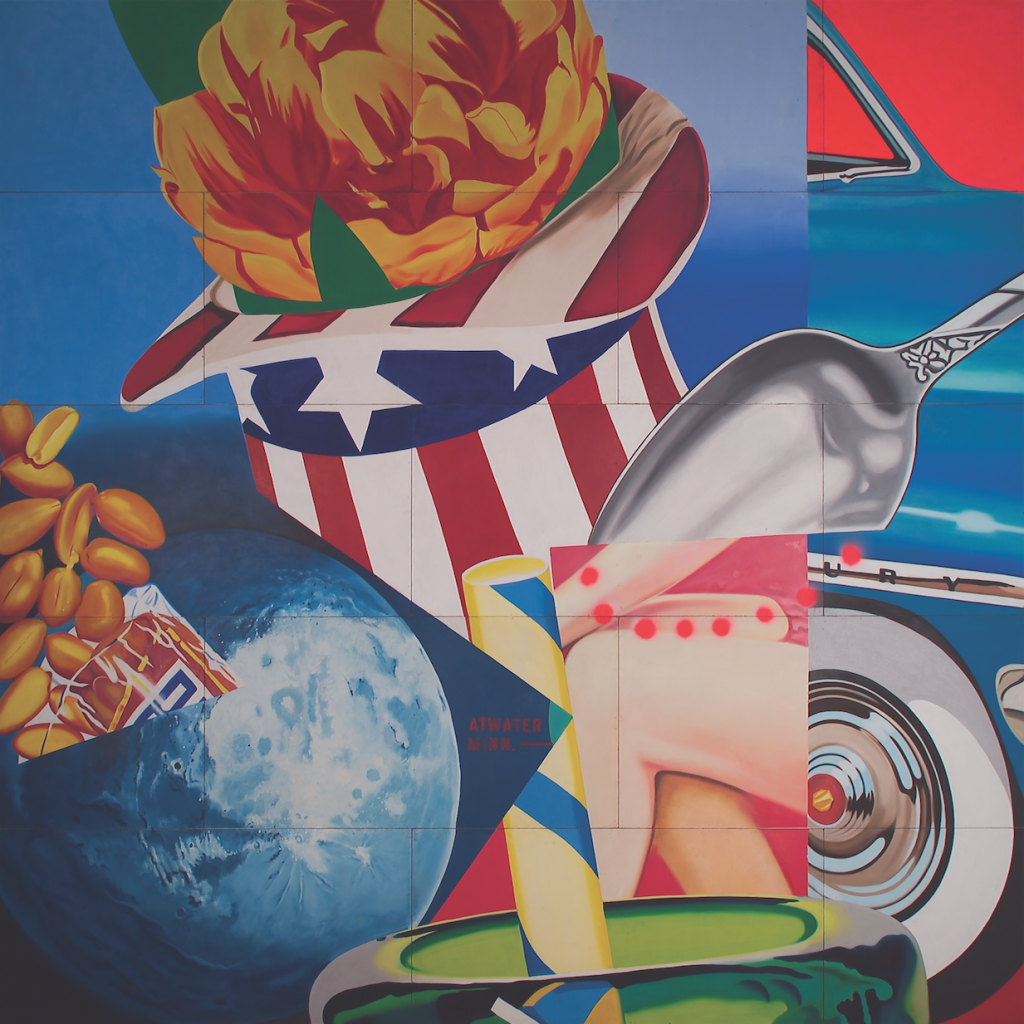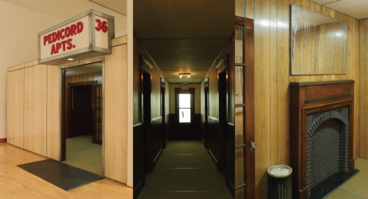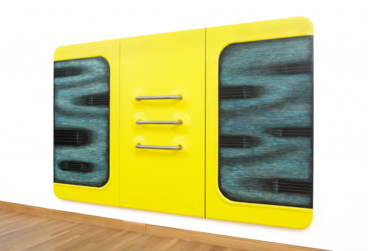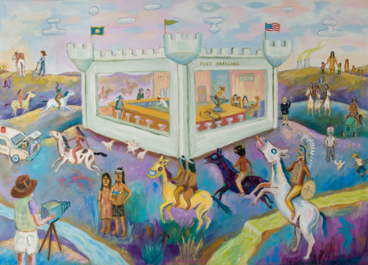According to Rosenquist, painting has everything to do with memory, and if so, then it is only fitting that we look into his past as he remembers it. Though Rosenquist is best known as a New York pop artist, he has never denied his Midwestern roots. It is not by accident that Atwater, Minn., in stencil-style red letters, lies at the heart of Rosenquist’s World’s Fair Mural of 1964-65.
His distinct impression of the Midwest from his childhood was that it was “a strange place. On the one hand it’s very basic, down-to-earth; on the other it’s a great generator of illusions.” Not surprisingly, some of his recollections are not quite accurate. WAM invites you to take a visual or actual road trip through Rosenquist’s Midwest, as mapped to the right.
The mural, like all of his paintings from the period, began as a collage of clippings taken from magazines and similar pop cultural material. He then blew up the dimensions using the commercial technique he learned as a billboard painter. Rosenquist was after what he termed the contemporary vision – “the flicker of chrome, reflections, quick flashes of light. Bing-bang! Bing-bang!” – indelibly shaped by the aggressive and ubiquitous advertising that defined the American cultural landscape. This sensory overload led to an emptiness and numbness that he wanted for his paintings, the “zero below abstraction” where one doesn’t really care about the images, i.e., what they are; they’re just there to delineate the picture plane. Billboard scale defamiliarized the imagery that Rosenquist pulled from ads, though he never identified brand names, as Warhol famously did with his Campbell’s soup cans and Brillo boxes. “They would be so big that the image closest to you would be smack! in your face; you wouldn’t be able to get it until the last minute.”
- Taken from the Spring 2012 Newsletter.



